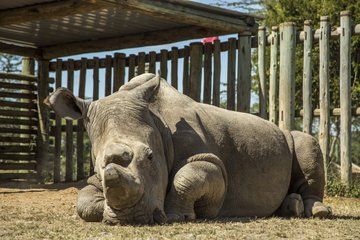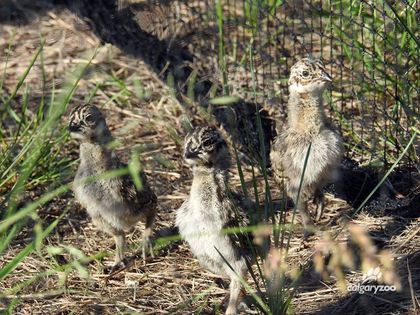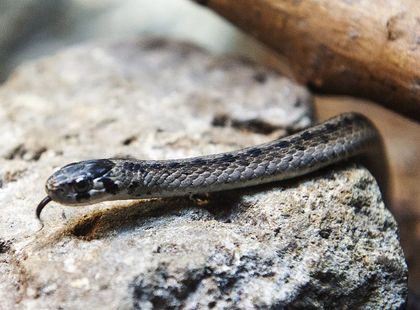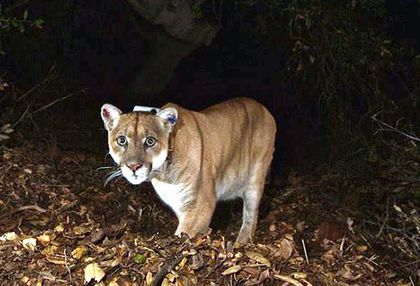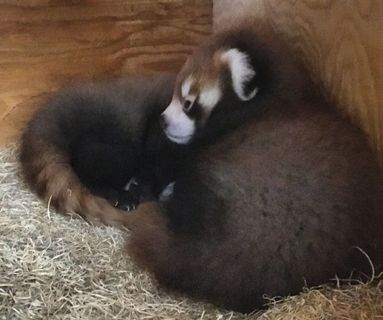Protected Areas
How would you feel if you had no home?
Tourists visiting Kenya want to observe free roaming elephants, rhinoceroses, and lions. Tanzania's Serengeti National Park offers breathtaking views of wildlife including gazelles, wildebeest and impalas along with zebras, giraffes and warthogs. Today, measures are being taken to protect not only animal species, but their habitats as well. This is why numerous protected areas are springing up throughout the world.
The first parks and reserves were mainly created by hunters looking to protect their spoils! When you think about it, not many pristine, unexplored wilderness areas are left on the planet. Parks and reserves were therefore established to protect the Great Coral Reef in Australia, the Everglades in the United States, the Amazon Forest in South America, etc. In terms of size of protected areas, Canada ranks 61st in the world, behind the United States, Germany, Guatemala and Zimbabwe! Organizations everywhere are working to preserve nature. UNESCO (the United Nations Educational, Scientific and Cultural Organization) has designated dozens of the world's most beautiful areas as heritage sites or biosphere reserves. These sites include, among others, Gros-Morne National Park in Newfoundland (1987), Wood Buffalo National Park (1983) in western Canada and Lac-Saint-Pierre in Quebec (2000), to name only a few. Conservation has also made great strides elsewhere in the world. For example, Australia boasts 18.4 % and Costa Rica 34% of protected land, with the world average standing at 13% (2008).
The Situation in Canada
Canada's first protected area, Banff National Park (Alberta), was established in 1885. The first wildlife refuge (Last Mountain Lake) came into being in 1887 in Saskatchewan and the first provincial park (Algonquin in Ontario) in 1893. The first municipal park was created at Mount Royal in Montreal in 1872.
The purpose of national parks is to protect and enhance elements of Canadian heritage regarding both visitors' access and the conservation of ecosystems. The park network consists of terrestrial areas varying from 9 km² (900 ha) for St. Lawrence Island Park (Quebec) to 45,000 km² (4.5 million hectares) for Wood Buffalo National Park (Alberta and the Northwest Territories). The latter, created in 1922, is the largest national park in the country and one of the largest in the world – with even more land than Switzerland! It was created to protect the last herds of Wood Bison in the north, and today it protects Canada's Northern Boreal Plains as well. The network of Canadian national parks includes 42 parks covering an area of 244,566 km² (244,566,600 ha), an amount of land equal in size to all New Zealand!
National Marine Conservation Areas (NMCA), for their part, aim to protect Canada's 29 marine areas. The first marine area (Fathom Five National Park, Ontario) was created in 1987, while the Saguenay-St. Lawrence Marine Park in the St. Lawrence estuary (Quebec) dates to 1998. This vast marine ecosystem features a deep fjord characterized by a unique biodiversity. Found here are some fifteen marine mammals, including the St. Lawrence Beluga, a species threatened with extinction whose population fell from 5000 to 500 individuals in less than a century.
To protect animals, natural spaces must be conserved
Canada currently devotes over 9.5 % of its territory to protected areas (about 8,500 zones). Close to 4.8% are strictly shielded from all commercial extractive activities (hunting, lumbering, hydroelectric projects, resource extraction), for a total of more than 800,000 km² (80 million hectares). In addition, some 10,000 km² (1 million hectares) of terrestrial protected areas belong to non-governmental organizations. In keeping with the Convention on Biological Diversity, the country is committed to completing its network of terrestrial protected areas by 2010 and of marine protected areas by 2012.
Each province, along with municipalities, individuals and organizations, acquires and manages lands in the form of protected areas with a view to conserving wildlife and biodiversity. In October 2008, 6.96% of Quebec lands were protected areas. Quebec has agreed to protect a representative sample of its ecosystems, setting a goal of 8% by March 31, 2009. In the eyes of some, this is setting the bar too low. The organization Citoyens pour la nature (Citizens for Nature) recommends protecting at least 50% of the territories in northern Quebec to ensure conservation of the Woodland Caribou. Doing so would also help combat climate change.
Wildlife often requires a particular habitat or a large forest corridor for its specific needs, which include suitable food and shelter. Migrating species such as the caribou, the Monarch Butterfly and numerous birds require a number of distinct zones. They breed in one habitat in summer, spend the winter in another and travel long distances during their seasonal migrations. Therefore, it is important to conserve specific zones with a view to protecting the plants and wildlife that inhabit them. Human beings – their future descendants in particular - will also come out on the winning side.
Total terrestrial protected areas by province and territory, 2005 (Source: Statistics Canada, most recent report from Environment Canada)
| Protected areas | Area protected | Amount of land | Percentage of land protected | |
|---|---|---|---|---|
| number | km² | km² | % | |
| Canada | 8,475 | 855,973 | 9,093,507 | 9.4 |
| Newfoundland and Labrador | 63 | 18,383 | 373,872 | 4.9 |
| Prince Edward Island | 184 | 161 | 5,660 | 2.8 |
| Nova Scotia | 75 | 4,557 | 53,338 | 8.5 |
| New Brunswick | 106 | 2,321 | 71,450 | 3.2 |
| Quebec | 1, 096 | 75,652 | 1,365,128 | 5.5 |
| Ontario | 666 | 94,614 | 917,741 | 10.3 |
| Manitoba | 122 | 42,755 | 553,556 | 7.7 |
| Saskatchewan | 4,608 | 53,375 | 591,670 | 9.0 |
| Alberta | 537 | 82,501 | 642,317 | 12.8 |
| British Columbia | 948 | 120,882 | 925,186 | 13.1 |
| Yukon Territory | 24 | 52,348 | 474,391 | 11.0 |
| Northwest Territories | 19 | 94,894 | 1,183,085 | 8.0 |
| Nunavut Territory | 27 | 213,530 | 1,936,113 | 11.0 |

